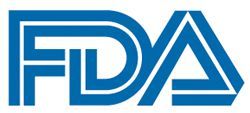FDA Approval Sought for Tovorafenib in Relapsed or Progressive Pediatric Low-Grade Glioma
A rolling new drug application seeking the approval of tovorafenib monotherapy for the treatment of patients with relapsed or progressive pediatric low-grade glioma has been submitted to the FDA.
FDA

A rolling new drug application (NDA) seeking the approval of tovorafenib (DAY101) monotherapy for the treatment of patients with relapsed or progressive pediatric low-grade glioma has been submitted to the FDA.1 It is anticipated that the regulatory agency will file the application by mid-November 2023.
The NDA is supported by data from the phase 2 FIREFLY-1 trial (NCT04775485), which demonstrated that evaluable patients treated with tovorafenib (n = 69) experienced an overall response rate (ORR) of 67% per Response Assessment for Neuro-Oncology High-Grade Glioma (RANO-HGG) criteria. Additionally, the clinical benefit rate was 93%, including a complete response (CR) rate of 17%, a partial response (PR) rate of 49%, and a stable disease (SD) rate of 26%. At the data cutoff date of June 5, 2023, the median duration of response (DOR) was 16.6 months (95% CI, 11.6-not estimable [NE]) per RANO-HGG criteria.
Detailed findings will be presented at an upcoming medical conference.
“We believe that tovorafenib, if approved, could change the treatment landscape for children living with this chronic and relentless disease,” Jeremy Bender, PhD, chief executive officer of Day One Biopharmaceuticals, stated in a news release. “The NDA submission of tovorafenib is a significant milestone for Day One and an important step towards bringing a potential new targeted therapy to children with brain cancer.”
The ongoing, multicenter, single-arm, open-label FIREFLY-1 study is evaluating tovorafenib as once-weekly monotherapy in patients aged 6 months to 25 years with relapsed or progressive pediatric low-grade glioma harboring a known activating BRAF alteration.2
Arms 1 and 2 include patients with relapsed or progressive low-grade glioma with a documented known activating BRAF alteration, and arm 3 features patients with locally advanced or metastatic solid tumors with a documented known or suspected activating RAF fusions. All patients are required to have received at least 1 line of systemic therapy and have evidence of radiographic progression, as well as at least 1 measurable lesion, as defined by RANO (arms 1 and 2) or RECIST v1.1 (arm 3) criteria.
Key exclusion criteria include the presence of additional, previously known activating molecular alterations, symptoms of clinical progression in the absence of radiographic progression, and a known or suspected diagnosis of neurofibromatosis type 1.
Patients are being treated at the recommended phase 2 dose of 420 mg/m2 of oral tovorafenib once weekly for each 28-day treatment cycle. Patients are undergoing radiographic evaluation of their disease at the end of every third cycle. Treatment is continuing until radiographic evidence of disease progression by RANO or RECIST v1.1 criteria as determined by the investigator, unacceptable toxicity, withdrawal of consent, or death. Patients who experience radiographic evidence of disease progression are allowed to continue treatment if they are deriving clinical benefit in the opinion of the investigator.
ORR by RANO-HGG criteria is serving as the trial’s primary end point. Secondary end points include ORR by Response Assessment in Pediatric Neuro-Oncology Low-Grade Glioma (RAPNO-LGG) criteria, progression-free survival (PFS), DOR, time to response, CBR, and safety. ORR by Response Assessment for Neuro-Oncology Low-Grade Glioma (RANO-LGG) is an exploratory end point.
Additional data showed that in patients evaluable per RAPNO-LGG criteria (n = 76), the ORR was 51% and the CBR was 82%. The rates of PR, minor response (MR), and SD were 37%, 14%, and 30%, respectively. The median DOR was 13.8 months (95% CI, 11.3-NE).
Findings from an exploratory analysis demonstrated that patients evaluable per RANO-LGG criteria (n = 76) achieved an ORR of 53% and a CBR of 83%. The PR, MR, and SD rates were 26%, 26%, and 30%, respectively. The median DOR was 14.4 months (95% CI, 11.0-NE).
Among patients in arms 1 and 2 evaluable for safety (n = 137), treatment was well tolerated, and most adverse effects (AEs) were grade 1 or grade 2. The most common treatment-related AEs included change in hair color (76%), fatigue (44%), maculopapular rash (41%), dry skin (33%), and dermatitis acneiform (30%).
The most reported treatment-related lab abnormalities were creatinine phosphokinase elevation, lactate dehydrogenase elevation, anemia, hypophosphatemia, and aspartate transaminase elevation. Most lab abnormalities had no clinical manifestations and did not require clinical intervention or change in study treatment.
References
- Day One announces updated FIREFLY-1 data for tovorafenib and completion of rolling NDA submission to FDA for relapsed or progressive pediatric low-grade glioma (pLGG). News release. Day One Biopharmaceuticals. September 11, 2023. Accessed September 11, 2023. https://ir.dayonebio.com/news-releases/news-release-details/day-one-announces-updated-firefly-1-data-tovorafenib-and
- A study to evaluate DAY101 in pediatric and young adult patients with relapsed or progressive low-grade glioma and advance solid tumors (FIREFLY-1). ClinicalTrials.gov. Updated January 11, 2023. Accessed September 11, 2023. https://clinicaltrials.gov/study/NCT04775485



